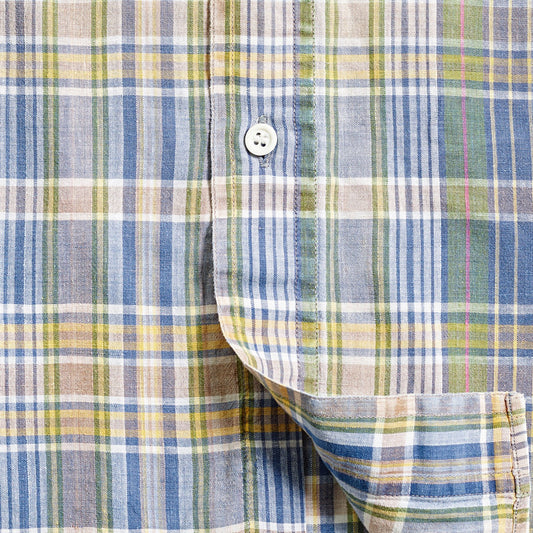A summery style with origins in India and Malaysia, gingham is in possession of about 500 years of history. It has many personalities: it’s associated with picnic linens and folksy housewares, but also a default shirt choice for creative professionals, and still looks as adorable on kids as it did a hundred years ago. It’s hard to think of a more versatile pattern.
Nothing says bold quite like a daring pattern on a shirt. GANT’s five tried-and-true patterns; Gingham Check, Madras Check, Breton Stripe, Banker Stripe and Pinstripe; keep everyone coming back for more.
Back in the 1950s, the prevailing color for a man’s shirt was white. However, that all changed when GANT invented an audacious new look, a look that later became known as “The Oxford Color Explosion.” As this colorful new decade unfolded, GANT began to develop more unusual patterns such as madras checks and Breton stripes that were perfectly in tune with the revolutionary spirit of the sixties.

Gingham Check

Madras Check
Distinctive for the ‘bleeding’ effect of its many dyes, this splashy look came into being more than a century ago in India, when local artisans adapted the tartans of their British colonizers to the tropical climate. The lightweight cotton weave became resort fashion in the thirties and exploded during the heyday of the collegiate look in the sixties, when madras trousers came to embody the “go-to-hell” style of the east-coast elite. It has more democratic associations now, but retains some of the nostalgia and irreverence of years past.

Banker Stripe
Despite the boardroom name, this dressy shirt pattern is easily adapted to tweedy ends, and sleeve-rolled versions play well at the beach club, too. This shirt pattern, featuring medium-width stripes, came into being around a half-century ago.

Pinstripe
Stripes have come a long way since the Middle Ages, when they once carried religious overtones. Super-narrow stripes have changed, too. They’re not just for business suits; adorning a slim-fit shirt, they can be dressed down just as easily as up, debunking the old adage that thinner stripes are always dressier.

